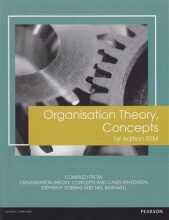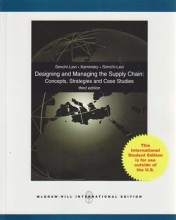Summary: Marketing Research. | 9781118112717 | Carl McDaniel, et al
- This + 400k other summaries
- A unique study and practice tool
- Never study anything twice again
- Get the grades you hope for
- 100% sure, 100% understanding
Read the summary and the most important questions on Marketing research. | 9781118112717 | Carl McDaniel, Jr., Roger Gates.
-
1 Introduction to Marketing Research
This is a preview. There are 5 more flashcards available for chapter 1
Show more cards here -
What is the ''marketing mix'' and why is it related to marketing research?
The unique blend of product/service, pricing, promotion, and distribution strategies designed to meet the needs of a specific target market.
Marketing research is a key means for understanding the environment. Knowledge about the environment helps a firm not only to alter its present marketing mix, but also to identify new opportunities. -
What are the functional roles of marketing research?
Descriptive funtion:
Gathering and presentation of statements of fact. E.g. What is the historic sales trend in the industry?
Diagnostic funtion:
The explanation of data or actions. E.g. what was the impact on sales when Oscar Mayer package was changed?
Predictive function:
Specification of how to use descriptive and diagnostic research to preduct the results of a planned marketing decision. E.g. How can the firm best take advantage of opportunities as they arise in the ever-changing marketplace? -
What is return on quality?
Management objectives based on the principles that (1) the quality being delivered is at a level designed by the target market and (2) the level of quality must have a positive impact on profitability. -
Waht does it take for managers to be proactive?
By having thorough knowledge of factors that have an impact on the target market and marketing mix, management can be proactive rather than reactive. Proactive management alters the marketing mix to fit newly emerging patterns in economic, social and competitive environments.
A proactive manager not only examines emerging markets but also seeks, through strategic planning, to develop a long-run marketing strategy for the firm. -
What is the difference between applied and basic (or pure) research?
Applied research:Research aimed at solving a specific, pragmatic problem. Better understanding of the marketplace, determination of why a strategy or tactic failed, or reduction of uncertainty in management decision making.
Basic (or pure) research:
Reseatch aimed at expanding the frontiers of knowledge rather than solving a specific pragmatic problem. Used to validate a theory or learn more about a concept or phenomenon. -
What are the situations in which marketing research is not a good option?
1 Resources are lacking;
2 Research results would not be usefull;
3 The opportunity has passed;
4 The decision has already been made;
5 Managers cannot agree on what they need to know to make a decision;
6 Decision-making information already exists;
7 The cost of conducting research outweight the benefits (two important benefits are profit margins and market size). -
What are the benefits from internet for marketing researchers?
Provides more rapid access to business intelligence, which allows for better and faster decision making;
Improves firm's ability to respond quickly to customer needs and market shifts;
Facilitates conducting follow-up studies and longitudinal research;
Slashes labor- and time-intensive research activities (and associated costs), including mailing, telephone soliciation, data entry, data tabulation and reporting. -
What key areas did the internet affect?
Libraries and various printed materials, which may be virtually replaced as sources of information;
The distribution of request for proposals (RFPs) and proposals themselves;
Collaboration between the client and the research supplier in the management of a research project;
Data management and online analysis;
Publishing and distribution of reports;
Oral presentations of marketing research survers, which now can be viewed by widely scattered audiences. -
3 Steps in the Research Process
This is a preview. There are 21 more flashcards available for chapter 3
Show more cards here -
What are the steps in the problem definition process and why is this process important?
1 Recognize the problem or opportunity;
2 Find out why the information is being sought;
3 Understand the decision-making environment (the industry, company, products, and target market);
4 Use the symptoms to help clarify the problem;
5 Translate the management problem into a marketing research problem;
6 Determine whether the information already exists;
7 Determine whether the question really can be answered;
8 State the research objectives.
The ultimate goal of problem definition is to develop clear, concise, and meaningful marketing research objectives. Researching such objectives will yield precise decision-making information for managers. -
What is a situation analysis?
Studying the decision-making environment within which the marketing research will take place.
- Higher grades + faster learning
- Never study anything twice
- 100% sure, 100% understanding































